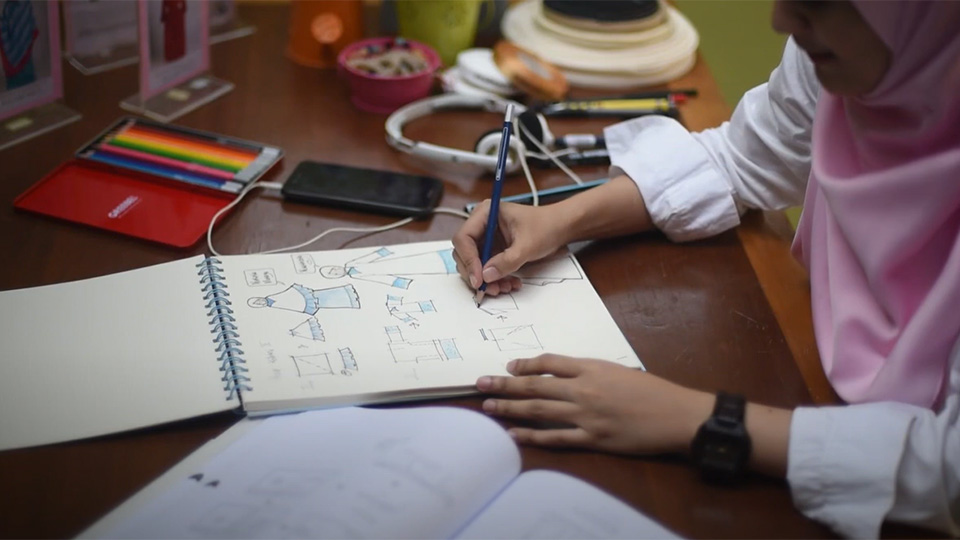The 1st alternative to mini-grids and solar home systems for rural electrification
Despite advances in power generation and storage technologies, bringing electricity to the most far-flung reaches of the globe remains problematic due to difficulties in the distribution not just of power, but also of power technologies themselves. In areas where economic, topographical, and weather conditions are a serious hindrance to the establishment of traditional power distribution chains, solutions that bridge the gaps left by existing technologies may hold the key to unlocking access to electricity in even the remotest communities.
Sustainable energy for all
The World Bank estimates that there are some 760 million people worldwide who live off-grid of conventional power distribution technologies. Sydney, Australia-based power distribution start-up Okra Solar has come up with alternative solutions that seek to combine the strengths of existing technologies while also providing innovations of their own. Their solutions strive to contribute to the UN SDGs 1, 3, 4 and 7 providing access to affordable, reliable, sustainable and modern energy for all.
Disadvantages of Solar Home Systems and mini-grids for off-grid areas
Traditionally, Solar Home Systems (SHS) and mini-grids have been the primary ways of supplying last-mile electrification for many years now. Both of these technologies have advantages, but they have failed to provide dependable, productive, and economical electricity to the world's most distant locations.
SHS have provided millions of underprivileged people throughout the world with basic access to electricity for fundamentals such as lighting and phone charging, thanks to the technology’s flexibility, speed, and simplicity. However, they simply do not produce enough energy or power for the kind of productive usage that is essential for the long-term viability of last-mile electrification initiatives. Though undoubtedly beneficial, SHS are an imperfect solution because they are ineffective in supplying productive electricity to developing communities when compared to power grid systems.
Mini-grids, on the other hand, are based on a centralized architecture in which energy is generated and stored at a single location before being delivered all the way to separate residences. Mini-grids are able to provide high amounts of useful electricity, making them ideal for densely inhabited regions lacking a dependable grid. However, over half of the world's unenergized population - estimated at some 760 million people—live in rural communities with scattered households, sparse populations, and unpredictable energy consumption due to seasonal fluctuations in subsistence farming and other localized activities. Mini-grids, by their nature, are thus ill-fitted to serve these populations adequately.
The biggest disadvantage of constructing mini-grids for last-mile implementation is the high cost of distribution assets (e.g., poles, cables, inverters). To safely distribute electricity over long distances while allowing for peak consumption, it is necessary to have high-maintenance assets such as high-voltage and high-current cabling, heavy duty transmission poles, and large inverters. All of these assets can only be repaired by licensed personnel who usually have to travel great distances to remote installations. Thus, maintenance is costly and time-consuming in the case of a breakdown, resulting in service quality degradation.
As a result, according to Okra Solar's own studies, around 50% of capital expenses go toward distribution infrastructure, and operational charges can contribute up to 40% of overall project costs. So, when installed in last-mile zones, mini-grids have an average payback duration of at least 10 and as much as 20 years, with many failing to establish financial sustainability within that time. According to the World Bank, yearly mini-grid installations must quadruple to reach 2030 electrification targets, but their high capital and operating costs prevent them from doing so.
Mesh Grids - Hardware and software for last-mile energy access

Okra Solar has developed a new third option to bridge the gap between SHS and mini-grids: mesh grids. Okra mesh-grids (OMGs) combine the flexibility and speed of SHS with the dependability and energy supply characteristics of mini-grids for rural electrification.
Mesh-grids, as opposed to centralized mini-grids, are:
- decentralized and modular, with
- generation and storage assets (i.e., solar panels and batteries), as well as
- inverters distributed and installed at each residence.
Local Smart Power Distribution at reduced upfront costs
This design ensures that most of the energy that is produced is also consumed in the same location - similar to SHS, but with a major difference: neighbouring households can also interconnect and form power-sharing clusters, with smart algorithms redistributing excess power at 50VDC, which can be safely serviced by local community members with even just minimal training.

This mesh-grid power-sharing function also accommodates fluctuations in demand, boosts dependability, and lowers upfront expenditures. Meanwhile, isolated houses can operate independently until a neighbouring household is ready to connect and to exchange electricity. Mesh-grids are flexible enough to grow continuously as more households join a network and as demand increases.
The Pod - Okra's proprietary controller
One of the key building blocks of the mesh-grid is The Pod - Okra's proprietary controller that regulates power distribution, remote monitoring, and mobile billing -which underpins and controls the mesh-grid's decentralized design. Each Pod produces 1.2kW (AC or DC), which is sufficient to power essential appliances and boost network profitability. Through Okra's upcoming "Grid Gateway," excess electricity from commercial loads or neighbouring grids may be diverted into mesh-grids to help lower distribution costs.

Benefits of decentralised solar power generation
The fundamental benefit of decentralising power generation and energy storage is that it:
- considerably decreases the overall quantity of power traveling through a network because energy is largely generated and used by the same family, with any excess efficiently routed to surrounding houses.
- Mesh-grid node-to-node distribution requires connections that are just 10 times thinner than conventional ones, thereby lowering distribution costs by as much as 90% when compared to the usual centralized mini-grids.
Modular expansion capacity
Yet another advantage of power generation decentralization is its modular expansion capacity, which does not require the replacement of previously-installed assets. This allows for constant load growth as energy needs change over time, as well as quick grid expansion as more families join the network.
Reduced outage with local maintenance of Okra Solar system
The 50VDC distribution voltage in Okra mesh-grid networks is intended to allow minimally-trained people from the local communities themselves to safely perform maintenance when necessary. This allows energy managers and distributors to hire locally instead of hiring outside experts, thereby fostering trust and buy-in from the community. Overhead and maintenance in a mesh-grid is inexpensive, quick, and simple, especially when compared to sending experienced professionals out on costly trips to conduct needed improvements.
Fast to deploy for energy self-sufficiency
Moreover, mesh-grids are quick to roll out because the assets are placed in individual residences, thereby eliminating the need to allocate additional land area for their setup. This also has the benefit of shortening project delivery timetables to make a home energy self-sufficient.
Cost-effective solar energy
Also, mesh-grids benefit off-grid energy developers by giving more utility per dollar, since the technology is particularly designed with the needs of last-mile communities in mind.
Role of IP in producing last-mile electricity for everyone
Okra Solar acknowledges that its intellectual property (IP) has played a fundamental role in its success towards achieving its goal of last-mile electrification for everyone. To that end, the company pioneered novel systems for last-mile electrification through its own forays into hardware, software, and firmware IP. With open-source funding, the start-up tasked its remote internal team to conduct field trials of its technology towards the iterative improvement of its own products and production processes. This has enabled Okra Solar to maintain a high degree of flexibility in the development and deployment of its IP to suit the needs of a broad range of clients based on its novel microgrid concept.

Machine learning & geospatial algorithms for power distribution
The company employs machine learning and geospatial analysis algorithms to plan its microgrids, which incorporate a scalable mesh-grid solar system design with panels and batteries that can be added to or upgraded as a community’s needs change. The Pod uses machine learning to analyse power distribution patterns. The devices are also linked up via the company’s proprietary cloud software, which provides real-time data on the networks’ performance to enable grid operators to pinpoint precisely when and where upgrades are needed. This system allows operators the flexibility to make quick decisions in response to changing demands and to proactively minimise or entirely eliminate power outages.
Power to the people with seamless payment of energy bills

Meanwhile, on the ground, low-income households - which usually do not have access to a regular bank account - can be individually metered and charged via mobile payment options. Seamless integration with mobile money providers allows consumers to pay for their power consumption by scanning a QR code with their smartphones or some other similar mobile-based option.
This adaptive and convenient strategy is enabling Okra Solar to bring off-grid power to remote villages in developing countries, including the Philippines, Cambodia, and Nigeria.



